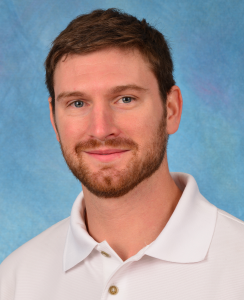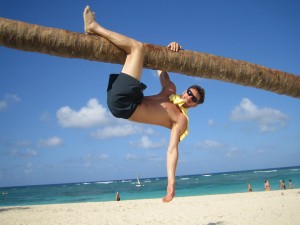Apr 10 2016
Ritter, Christopher
Welcome to my Portfolio Page! Please feel free to comment or contract me by email with any questions.
-Christopher Ritter (rittech@gmail.com)
My goal is to make significant and lasting contributions to the profession of physical therapy through elite and innovative patient care, extensive continuing education, exemplary professionalism, active involvement in local and national professional organizations, and dedication to mentorship and education.
Career Timeline
- 2002-2007: B.S. Psychology, Minor Philosophy, The University of North Carolina at Chapel Hill
- 2007-2012: Career in Sales, Marketing, and Hospitality
- Lantern Restaurant and Bar Chapel Hill, NC
- Casa Caracol Hostel Cadiz, Spain
- 458 Acquisitions Inc. Raleigh, NC
- Sageworks Inc. Raleigh, NC
- 2012 Career Change
- 52 Credit Hours Earned in 2012 calendar year at 4 different Colleges and Universities (NCCU, UNC-CH, Durham Technical Community College, Wake Technical Community College) due to scheduling logistics
- Working part-time (15-25 hours/week) at Sheraton Hotel in Chapel Hill and then at the Siena Hotel during PT school.
- Volunteering / Shadowing at NCCU Training Room, UNC Hospitals, and area PT clinics
- Founded NCCU Pre-Physical Therapy/Occupational Therapy Organization (PPTOTO)
- 2013: Full-time internship at Athletic Advantage Sports Physical Therapy Private Practice
- Spring 2013: Graduated Summa Cum Laude with highest GPA in the program earning B.S. Physical Education with Concentration in Exercise and Sport Science from North Carolina Central University
- 2014: Clinical Rotation I at Breakthrough Physical Therapy Private Practice: Outpatient Orthopedics
- 2015: Clinical Rotation II at Novant Healthcare Forsyth Medical Center: Acute
- 2015: Clinical Rotation III at Genesis Rehabilitation: Continuing Care Retirement Community (CCRC)
- 2016: Clinical Rotation IV at UNC Hospital: Spine & Imaging Center + Meadowmont Wellness Center: Outpatient Orthopedics
- Third Year Electives:
- PHYT 875 Advanced orthopedic assessment and intervention
- PHYT 870: Integrated Clinical Experience at UNC Faculty Clinic: working with divers
 e orthopedic patient population alongside faculty clinicians. Learned the art of lower extremity assessment and fabrication of custom foot orthoses from Mike Gross PhD, FAPTA.
e orthopedic patient population alongside faculty clinicians. Learned the art of lower extremity assessment and fabrication of custom foot orthoses from Mike Gross PhD, FAPTA. - PHYT 895: Interdisciplinary Service Learning Trip to Tyrrell County
- 2016: July 19th: Pass the NPTE
- 2016 August, 6th: Graduate from Doctor of Physical Therapy program at The University of North Carolina at Chapel Hill and become fully licensed clinician in the state of North Carolina.
- August/September 2016: Full-time employment at orthopedic setting in the triangle area which provides excellent opportunities for mentorship and continuing education with a culture focused on optimization of patient care.
- During 1st year of practice: Attend “Evaluation and Treatment of Temporomandibular Disorders and Craniofacial Pain (TMD)” Course taught by Michael Karegeannes.
- During 1st 2 years of practice: NSCA Certified Strength and Conditioning Specialist (CSCS)
- During 1st 2 years of practice: Therapeutic Dry Needling Training and Certification through Myopain.
- By 3rd year of practice: Orthopedic Certified Specialist (OCS) to refine clinical skills for improved patient outcomes.
- By 3rd year of practice: Become an APTA Certified Clinical Instructor and regularly educate and learn from future PTs.
- By 5th year of practice: Present at local or national conference.
- By 6th year of practice: Obtain Certified Cervical and Temporomandibular Therapist Certification (CCTT) from the The Physical Therapy Board of Craniofacial & Cervical Therapeutics (PTBCCT)
Long-term Goals:
- Continue to serve as mentor to other individuals interested in pursuing a career in physical therapy.
- Develop area(s) of specialization and expertise on a level to educate other PTs through continuing education programs.
- Publish research or clinical education materials to contribute to collective knowledge and practice on a large scale.
- Contribute to education of future PT’s and research through a position as a faculty member at credentialed DPT program.
- Remain active in professional physical therapy organization(s) and serve in a leadership role to protect and further the future of the profession.
Self Assessment
|
Strengths |
|
|
Areas for Further Development |
|
Capstone Products
- Full Power Point Comprehensive, 100 slide power point with extensive detail on TMD, TDN, and the application of TDN in the treatment of TMD.
- Power Point Presentation slides from 4/20/16 to SDPTs, DPT faculty, and practicing clinicians on the use of therapeutic dry needling (TDN) in patients (TMDs).
- Clinical Quick Reference Guide For use of TDN with patients diagnosed with TMD to be used by PT’s in the clinical setting.
- Marketing Handout for Referral Sources One page information sheet appropriate for clinicians who utilize TDN to treat TMD, which can be easily customized to use as educational marketing material appropriate for potential referral sources.
- Patient Education Pamphlet Trifold brochure with information about TDN for treatment of TMD aimed at patients who may be appropriate for this treatment.
- Evidence Table Including Dry Needling and Acupuncture studies to answer the following question:
- For a patient with Temporomandibular Joint Disorder (TMD) is Therapeutic Dry Needling/Acupuncture Therapy effective in treatment of pain and other symptoms?
- Critically Appraised Topic (CAT) Summary of a systematic search and critical appraisal of research evidence related to the following focused clinical question:
- “For a 30 year old female who is diagnosed with temporomandibular disorder (TMD), do physical therapy treatment interventions which utilize therapeutic dry needling (TDN) result in significantly improved pain outcomes as compared to interventions which do not utilized TDN?”
Specific Strategies for Future Success
- Environment: Surround myself with other professionals who are passionate and dedicated to lifelong education and continued efforts to improve patient care.
- Self-Awareness: Recognize areas which are challenging for me and develop disciplined compensatory strategies including appropriate help when needed.
- Organization: Personally and professionally, organization is key for appropriate balance and prioritization needed to meet my goals.
- Collaborate: I work best when I am part of a team or have some shared investment and interaction with other people.


